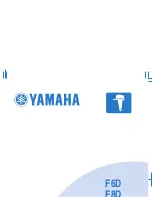
Evaluates: MAX9993
MAX9993 Evaluation Kit
2
_______________________________________________________________________________________
Quick Start
The MAX9993 EV kit is fully assembled and factory test-
ed. Follow the instructions in the
Connections and
Setup
section for proper device evaluation.
Test Equipment Required
Table 1 lists the equipment required to verify the opera-
tion of the MAX9993 EV kit. It is intended as a guide
only, and some substitutions are possible.
Connections and Setup
This section provides a step-by-step guide to testing
the basic functionality of the EV kit. As a general pre-
caution to prevent damaging the outputs by driving
high-VSWR loads,
do not turn on DC power or RF
signal generators until all connections are made.
This procedure is specific to operation in the U.S. PCS
band (reverse channel: 1850MHz to 1910MHz), low-
side injected LO for a 200MHz IF. Choose the test fre-
quency based on the particular system’s frequency
plan, and adjust the following procedure accordingly.
See Figure 1 for the mixer test setup diagram.
1) Calibrate the power meter for 1700MHz. For safety
margin, use a power sensor rated to at least
+20dBm, or use padding to protect the power head
as necessary.
2) Connect 3dB pads to the DUT ends of each of the
three RF signal generators’ SMA cables. This
padding improves VSWR, and reduces the errors
due to mismatch.
3) Use the power meter to set the RF signal generators
according to the following:
• RF signal source: -5dBm into DUT at 1900MHz
(this will be about -2dBm before the 3dB pad)
• LO1 signal source: +3dBm into DUT at 1700MHz
(this will be about +6dBm before the 3dB pad)
• LO2 signal source: +3dBm into DUT at 1701MHz
(this will be about +6dBm before the 3dB pad)
4) Disable the signal generator outputs.
5) Connect the RF source (with pad) to RF IN.
6) Connect the LO1 and LO2 signal sources to the EV
kit LO inputs.
7) Measure loss in the 3dB pad and the cable that will
be connected to IF OUT. Losses are frequency
dependent, so test this at 200MHz (the IF frequen-
cy). Use this loss as an offset in all output
power/gain calculations.
8) Connect this 3dB pad to the EV kit’s IF OUT connec-
tor, and connect a cable from the pad to the spec-
trum analyzer.
9) Set DC supply to +5.0V, and set a current limit
around 250mA if possible. Disable the output volt-
age and connect the supply to the EV kit through
the ammeter. Enable the supply. Re-adjust the sup-
ply to get +5.0V at the EV kit. There will be a voltage
drop across the ammeter when the mixer is drawing
current.
10) Select LO1 by connecting LOSEL (TP3) to GND.
11) Enable the LO and the RF sources.
Testing the Mixer
Adjust the center and span of the spectrum analyzer to
observe the IF output tone at 200MHz. The level should
be about +0.5dBm (8.5dB conversion gain, 3dB pad
loss). There will also be a tone at 199MHz, which is due to
the LO signal applied to LO2. The amount of suppression
between the 200MHz and 199MHz signals is the switch
isolation. The spectrum analyzer’s absolute magnitude
accuracy is typically no better than ±1dB. Use the power
meter to get an accurate output power measurement.
Disconnect the GND connection to LOSEL. It will be
pulled high by a pullup resistor on the board, selecting
LO2. Observe that the 199MHz signal increases while
the 200MHz decreases.
Reconfigure the test setup using a combiner or hybrid
to sum the two LO inputs to do a 2-tone IP3 measure-
ment if desired. Terminate the unused LO input in 50
Ω
.
Detailed Description
The MAX9993 is a highly integrated downconverter. RF
and LO baluns are integrated on-chip, as well as an LO
buffer and a SPDT LO input select switch. The EV kit cir-
cuit consists mostly of supply decoupling capacitors and
DC-blocking capacitors, allowing for a simple design-in.
Supply Decoupling Capacitors
Capacitors C2, C6, and C7 are 22pF (±5%) high-fre-
quency supply decoupling capacitors necessary to keep
EQUIPMENT
QTY
DESCRIPTION
HP E3631A
1
DC power supply
Fluke 75 Series II
1
Digital multimeter (ammeter)
HP/Agilent 8648B
3
RF signal generators
HP 437B
1
RF power meter
HP 8482A
1
High-power sensor (power head)
HP 8561
1
Spectrum analyzer
3dB Pad
4
3dB attenuators
50
Ω
Termination
1
50
Ω
(1W) termination
Table 1. Test Equipment























